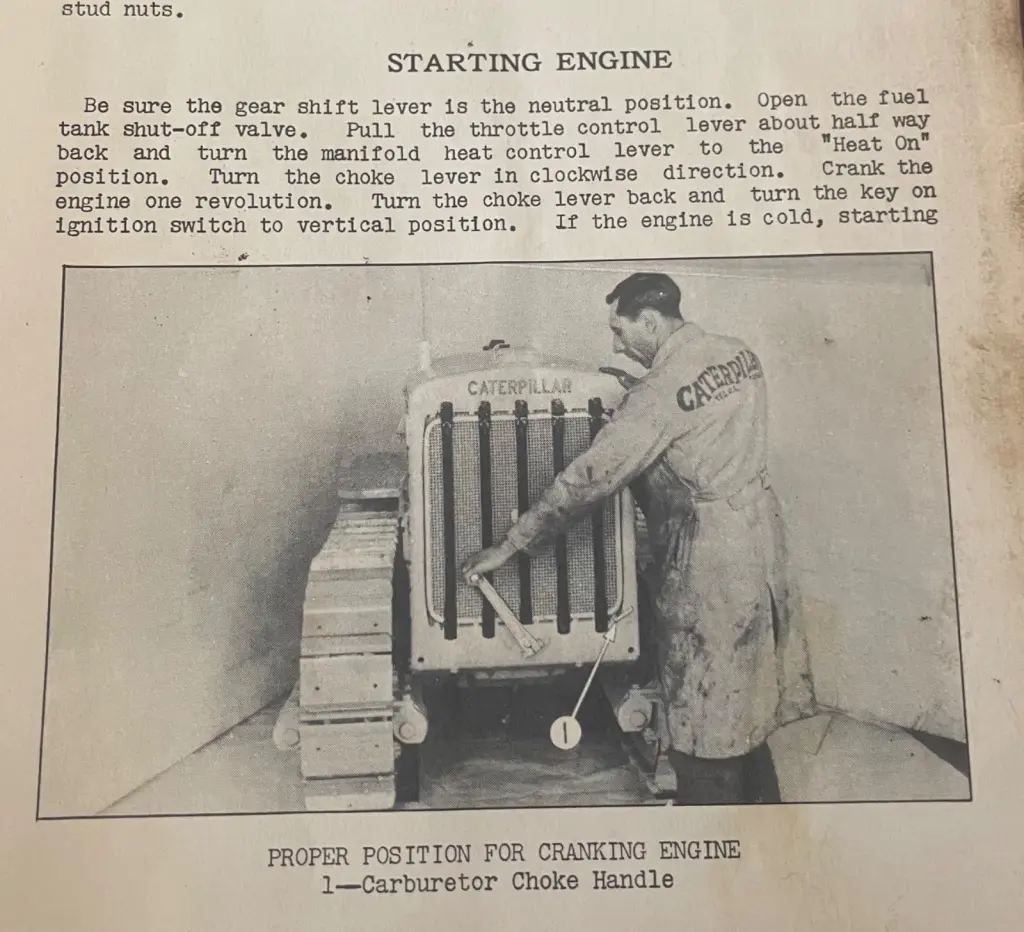Nice work on the starting contraption. Too steer pull the “stick” or steering clutch lever in all the way then apply pressure on brake pedal right or left with right or left steering clutch lever pulled
Thanks Skinner, I really appreciate the insight. The starter was a lot of work but my uncle has an old Case CC that I think it will be useful on as well. I'll try your suggestion in the next couple of days and report back. Hopefully the machine is fine and it's only my lack of knowing how to drive it that's the problem. I guess I need an operator's manual as well as a parts manual. I'm familiar with a little newer equipment that is steered by the levers only.
There's a guide on here on how to steer but basically with this generation of tractors, you always pull a clutch lever, and then you might apply a brake - which clutch lever and brake depends on the scenario and it would be good to practice in a wide open area so you can get the hang of it. If you know all of this already, please ignore.
- on flat ground, not pulling or pushing anything - pull lever and apply brake on the side that you want to steer to. Amount of brake depends on how tight you want to turn
- pulling or pushing a heavy load - pull lever on that side, brake application may not be required
- travelling downhill and/or with a heavy load that's "pushing" the tractor - pull the opposite lever to your intended direction - that track will freewheel and the load will push that side faster and so turn the tractor in the direction you intend to go
As with all things, try all this out so you get a feel for how your machine behaves under different circumstances. If you get flustered and it all seems to be happening "too fast", just stop, take a breather, and collect your thoughts.
There's a guide on here on how to steer but basically with this generation of tractors, you always pull a clutch lever, and then you might apply a brake - which clutch lever and brake depends on the scenario and it would be good to practice in a wide open area so you can get the hang of it. If you know all of this already, please ignore.
- on flat ground, not pulling or pushing anything - pull lever and apply brake on the side that you want to steer to. Amount of brake depends on how tight you want to turn
- pulling or pushing a heavy load - pull lever on that side, brake application may not be required
- travelling downhill and/or with a heavy load that's "pushing" the tractor - pull the opposite lever to your intended direction - that track will freewheel and the load will push that side faster and so turn the tractor in the direction you intend to go
As with all things, try all this out so you get a feel for how your machine behaves under different circumstances. If you get flustered and it all seems to be happening "too fast", just stop, take a breather, and collect your thoughts.
Please remember - those levers operate multiple disc clutch packs. The Brake Band around the drum forces the clutch discs to slip when the lever releaves the spring tension on the clutch packs.
IN an EMERGENCY SITUATION - one can PULL BOTH FRICTION LEVERS AND STAND ON THE BRAKES, THIS WILL STOP THE MACINE (IF) all is operational.
Nice to remember in the event the Master Clutch Fails!
As previously mentioned, good space around the machine and operator awareness are required. Tailseats are way worse than "top seats" for THROWING the operator.
CTS
Thanks CT. I want to make sure I'm doing it right and not causing undue damage to the machine. Like I said before, I understand mechanics fairly well and if I can see how the parts go together, I can see in my mind how they're supposed to work. I can see where the tail seat Cats would be dangerous to operate in rough conditions and where wide open spaces are ideal for learning the ropes. Yesterday when I got it started and wanted to see if it would move, I walked it out of the garage in a straight line and back in straight line with my hand hovering over the kill switch the whole time in case something went wrong.
2 Fingers if you are not shutting the engine down for emergency stopping, don’t use the Killswitch always shut the gas to the carburetor. This way the carburetor will run empty, killing the engine, and you will have less problems with the carburetor. Skinner
That makes sense Skinner, especially on an intermittent use or show tractor. Do you have any trouble getting it to start again after evacuating the carb or will the gravity feed into the carb and fuel in primer cups get it going. With my electric starter I'm not worried about how long I crank it, but I hope to get it to where it will start easily and consistently with the hand crank.
Regular running will keep it in good order. It's when they sit that they sometimes give trouble. That said, I'm looking after a Twenty-Two that only gets started once per year, and it's a very reliable starter. I do make sure that I run it out of gas by turning off the fuel valve
